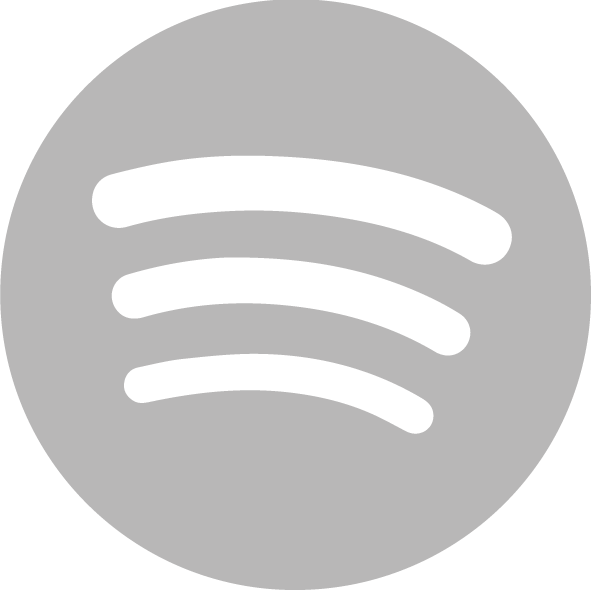- Periradiculotherapy (PRT)
This is the admission of a patient for targeted nerve root injection assisted by computed tomography (CT). It is a non-operative treatment option for long-term back pain. It is performed at the department of imaging methods by a radiologist. Prior to the application, the patient signs an informed consent with a detailed description of the procedure, which is given to the patient on admission (downloadable below).
- Lumbar puncture
It is a short hospitalization with cerebrospinal fluid examination, the reason for the examination is mainly various inflammatory diseases of the central nervous system, such as multiple sclerosis. It involves the collection of a small amount of cerebrospinal fluid by puncture in the lumbar region. In most cases, the examination is performed with an atraumatic needle in order to minimize possible complications. It is a needle with a "rounded" tip. Before the actual procedure, the patient signs a detailed informed consent form (downloadable below).
Neurology Department
Information for patients
What to take with you to the hospital can be found HERE. Highlights include a list of regularly taken medications, including dosages. For acute hospitalizations, please have family members supply the list.
Patients with a planned hospitalisation are ordered by their attending neurologist to be admitted to the neurology department on a specific day, the basic administrative reception takes place from 7.30 to 8.30 at the information centre at the entrance to the hospital. Thereafter, during the morning hours, the patient is seen by a nurse and a doctor. The patient is asked about anamnesis datawhich includes mainly family history - information about the illnesses of parents, siblings, etc., personal history - the patient's treated diseases, surgeries and serious injuries, permanently taken medications, allergies - drug and other ones, diet and illnesses. After that, a clinical examination of the patient is carried out, followed by a discussion of the treatment procedure and a plan of necessary examinations.
As a part of the admission to the hospital, the patient signs an informed consent form.
Information on specific hospitalisations
Information on the most common neurological diseases
- Cerebrovascular stroke
It is a suddenly occurring disorder of brain function, which is caused by impaired blood supply to some part of the brain tissue - 80% of cases, or cerebral hemorrhage - 20% of patients. The diagnosis is dominated by brain imaging (usually computed tomography (CT) is sufficient, rarely it is necessary to add magnetic resonance imaging), we also perform sonographic vascular examination of the carotid and cerebral arteries. In case of unexplained causes of stroke, a more detailed ultrasound examination of the heart is necessary. Stroke may present with impaired mobility, sensation, headache, speech impairment, visual disturbance or dizziness. Direct treatment of the larger group of strokes resulting from circulatory disturbances is possible in the acute stage, if the criteria (especially the time window) are met, by intravenous administration of an agent (thrombolytic) that can occlude the blocked artery - intravenous thrombolysis - methodology is provided in our ict center. For indicated patients, another option is mechanical artery patency, for which we send patients to one of the Brno complex ictus centres. Secondary prevention is important in order to minimise the risk of recurrence of stroke; this includes surgical treatment of narrowed cerebral arteries, medical treatment of blood clotting, lifestyle changes, etc. For patients who continue to have neurological deficits despite all treatment, we work with our rehabilitation department. We start rehabilitation as early as in the acute phase of the disease in the intensive care unit.
- Epilepsy
Epilepsy is a group of brain disorders manifested by recurrent seizures - paroxysms of different character. Seizures are caused by a focus of abnormal irritation of brain cells - neurons. The clinical manifestations of these paroxysms are varied: disturbances of consciousness and perception, convulsions of the limbs, vegetative manifestations, psychological symptoms. The classic seizure is the so-called grandmal - a seizure with sudden unconsciousness, convulsions, urination, biting. Other seizures include absence seizures - twitches (sometimes barely perceptible by the surroundings), then bearing seizures - twitches in certain muscle groups without loss of consciousness, olfactory seizures, etc. The nature of the seizure depends on the site in the brain that is affected. The cause is sometimes unknown, sometimes it is the result of another brain involvement - e.g. tumour, injury, vascular changes, congenital developmental defects. Epilepsy is the most common of all serious neurological diseases affecting both adult and pediatric patients, affecting approximately 0.5-1% of the total population. The disease is very disturbing, restrictive and limiting, and significantly changes the patient's life in many activities. About 60% of those affected experience only a few seizures, or seizures are well compensated by antiepileptic treatment with some possibility of discontinuation, 20% of those affected can be suppressed by permanent lifestyle measures and permanent medication, and about 20% of epileptics fail to compensate even with these lifelong measures and treatment - these are termed pharmacoresistant. For the diagnosis of epilepsy, it is of great importance to obtain anamnestic data from the patient, but also the so-called anamnesis objective from the witnesses of the paroxysm, the basic clinical neurological examination, lab tests, home video, electroencephalogram - EEG, neuroimaging CT and MR and a number of other examinations, e.g. neuropsychological, cardiological and in some cases also genetic examinations. For maximum effect of the treatment to achieve good results, above average cooperation of the patient and erudition (thorough education and knowledge) of the physician is necessary. The neurological clinic also includes a specialised clinic for the diagnosis and treatment of epilepsy, run by a licensed epileptologist. The epileptologist can consult uncompensated (resistant) patients with epilepsy from fellow specialists, and also decides on the consultation of such patients at a higher department. These higher workplaces (mostly established at teaching hospitals - Prague, Brno) then have additional advanced diagnostic methods, including the possibility of surgical treatment.
- Multiple sclerosis cerebrospinal
It is a chronic incurable disease caused by improper activation of the immune system against the envelope of nerve structures - myelin. The cause has not been clarified, but the influence of vitamin D, infectious diseases and genetic stress are debated. However, smoking is also a risk factor. It most often starts between 20-40 years of age, significantly more often in women. Typical first symptoms include visual impairment, tingling in the limbs, impaired limb mobility or dizziness. Diagnosis is dominated by examination by magnetic resonance imagingwhich can reveal inflammatory (demyelinating) foci in the brain tissue, as well as examination of the cerebrospinal fluid and visual pathways - VEP. The drugs of first choice are injectable immunomodulatory agents with a proven positive effect on the development of the disease. When injection therapy is ineffective, 2nd line drugs (natalizumab, fingolimod, fumarate) are an option. Rehabilitation is also an important component in the therapy of multiple sclerosis, here again we cooperate with the rehabilitation department of our hospital. We provide complete treatment options for MS in our MS centre.
- Vertebrogenic diseases
Back pain is one of the civilisation diseases that most people experience at least once in their lives. In the treatment, rest, common analgesics and, in the long term, the regular exercise focusing on the spine. In a minority of patients, difficulties persist, with pain shooting into one of the lower limbs. The diagnosis then requires an X-ray of the spine, and if a prolapsed disc is suspected and surgery is considered necessary (especially in the case of impaired mobility or sphincter disorders) by the magnetic resonance imaging of the spine. Apart from surgery, the treatment includes targeted injections of the affected nerve root with the assistance of computed tomography - PRT (periradiculotherapy). We cooperate with our rehabilitation department in the treatment of vertebrogenic diseases.
- Extrapyramidal diseases
Extrapyramidal diseases are a relatively broad group of diseases in which the basal ganglia are affected by various mechanisms. This is the area in the brain that is responsible for the fluidity of movement, its correct speed and timing and is involved in the formation of movement stereotypes. Clinically, it is therefore an impairment of one of these functions. Neurodegenerative diseases are the most significant, where the loss of brain functionality occurs as if "by itself". Of these, perhaps the most well-known is Parkinson Disease. The most prominent symptoms are tremor, muscle stiffness and significant limitation of mobility, which gradually increase. There are also diseases whose symptoms are practically "mirror" reversed. Nowadays, treatment options for extrapyramidal diseases are slowly improving, with more drugs with better targeting and milder adverse symptoms. Experience with this treatment in a larger number of patients is desirable, so in the autumn of 2009 we opened clinic for extrapyramidal diseaseswhere patients who were previously "scattered" to different neurologists come. Our outpatient clinic has a connection to a centre with a similar focus at the University Hospital U sv. Anny in Brno and to a centre in Prague, where we participate in the search for patients suitable for the so-called "neurological treatment" with the deep brain stimulationwhen a probe is inserted into the brain, which uses electrical impulses to influence the activity of these ganglia. In some special cases (not suitable for everyone!) it is the only option when drug therapy fails or cannot be continued. The outpatient clinic operates every Wednesday from 13:30 to 15:30 and patients are booked by phone at 567157652.
- Headaches
Headache (cephalea) is one of the most common problems in the neurological outpatient clinic. It can be of various origins, so it is important to discover the true cause. Only in this way can the problem be successfully treated from the outset, thus improving the quality of life of patients and avoiding long, often expensive treatment. A headache is defined as a painful sensation that occurs at the level of the cranial vault, i.e. from the eyes to the cervical spine. However, in some cases, headache may indicate a more serious disease that has no other clinical manifestations at its onset. Different types of headache can be distinguished according to the underlying cause: 1/ primary - a separate disease entity (migraine, tension headache) and 2/ secondary - can be a symptom of another disease (in the context of vascular diseases of the brain, post-traumatic, trigeminal nerve pain....). In terms of diagnosis, the important thing is medical history (antecedents - associated illnesses, family history of illness, for headaches a description of the nature of the headache, any accompanying symptoms - nausea and vomiting, visual disturbances; dizziness, memory impairment, etc.) and physical examination. Based on the medical history and physical examination, the doctor will determine the next necessary diagnostic procedure: such as. X-ray (of the skull, cervical spine, sinuses), electroencephalogram (sensing electrical brain activity via electrodes placed at specific locations on the skull), blood and cerebrospinal fluid analysis, imaging examination (using computed tomography - CT, or magnetic resonance imaging - MRI). Correct diagnosis, prevention and treatment of primary headaches can nowadays significantly improve the quality of life of patients. In the case of secondary headaches, their further course depends on the underlying disease. The prognosis of headaches resulting from more serious diseases will logically depend on their course. Our neurological outpatient clinic (general, as well as specialised headache clinics) provides a complete diagnosis and treatment of headaches. Treatment is then often carried out in collaboration with other specialists (rehabilitation doctor, ENT doctor, ophthalmologist, psychologist). From the patients' point of view, a responsible and cooperative approach is desirable.





